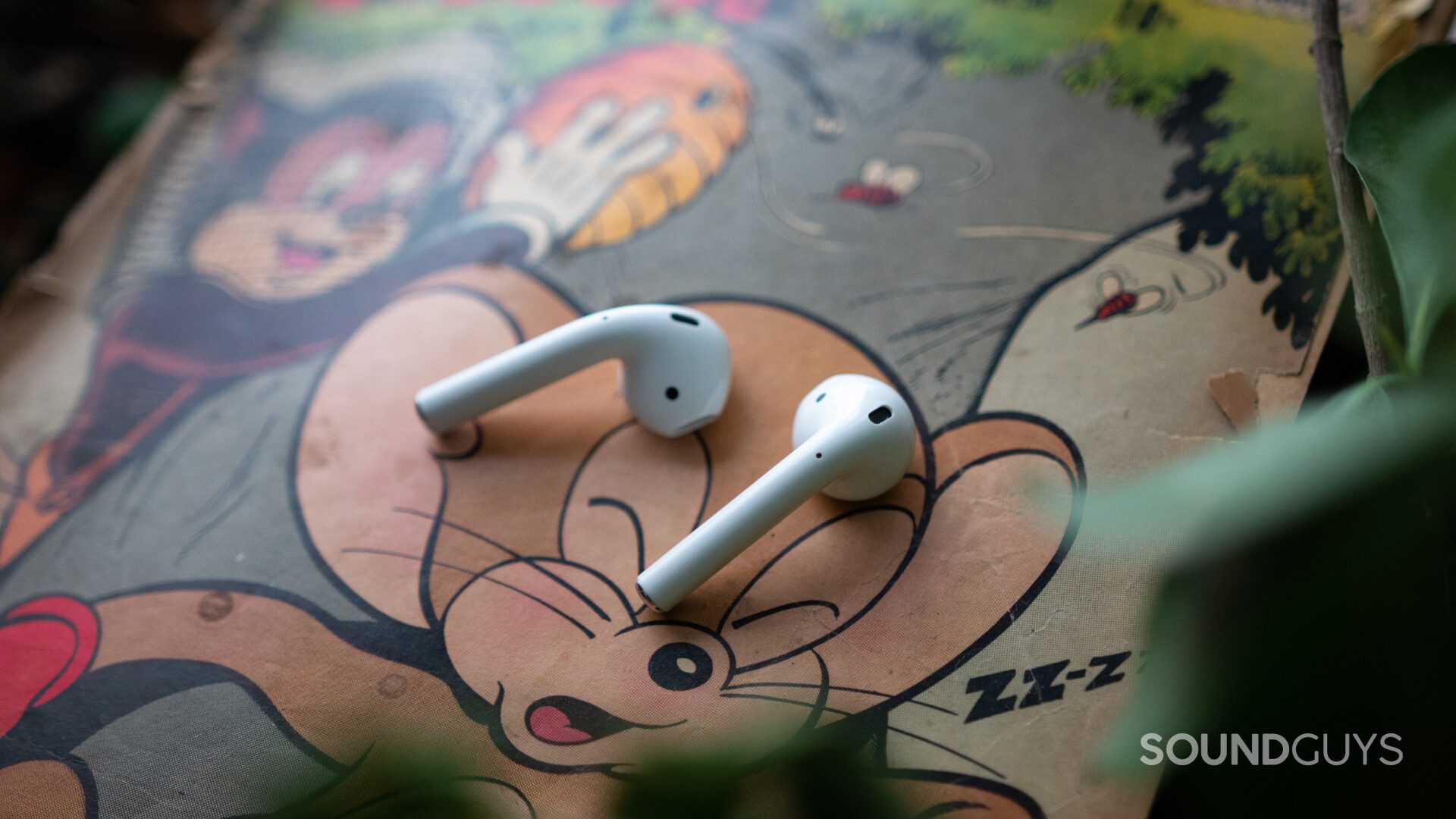Review sản phẩm
Đánh giá tai nghe Apple AirPods (thế hệ thứ 2): Vẫn chưa phù hợp với tất cả mọi người
Giới thiệu Apple AirPods (2nd generation) review: Still not for everyone
Đánh giá Apple AirPods (thế hệ thứ 2): Vẫn chưa phù hợp với mọi người
#AppleAirPods(Thế hệ thứ 2) đánh giá: Vẫn chưa phù hợp với mọi người #QueenMobile
Apple AirPods (Thế hệ thứ 2) là một trong những sản phẩm không dây phổ biến nhất trên thị trường hiện nay. Tuy nhiên, không phải ai cũng thích dùng nó. Để bạn có được cái nhìn tổng quan về sản phẩm này, chúng tôi xin trình bày một đánh giá về AirPods.
Một trong những điểm nổi bật về AirPods là thiết kế nhỏ gọn và không dây, giúp người dùng dễ dàng sử dụng và di chuyển. Tuy nhiên, không phải ai cũng hài lòng với thiết kế này. Một số người cho rằng AirPods trông không mấy ấn tượng và có thể dễ bị rơi khỏi tai do không có phần cố định.
Về chất lượng âm thanh, AirPods cho chất lượng âm thanh tốt, sắc nét và bass tương đối tốt. Đây là một điểm mạnh của AirPods và được nhiều người đánh giá cao. Tuy nhiên, cũng có người cho rằng âm thanh không được chuẩn xác và không đáp ứng tốt cho những bản nhạc phức tạp.
Một điểm khác cần lưu ý là AirPods không phù hợp cho những người nghiêm túc về giải trí âm nhạc, như những người yêu thích độ sâu và chi tiết hơn trong âm thanh. Sản phẩm này thích hợp với những người dùng thông thường, những ai chỉ cần tai nghe để nghe nhạc hoặc nghe cuộc gọi thông thường.
Ở phía kỹ thuật, AirPods hỗ trợ kết nối Bluetooth, có thể kết nối dễ dàng với các thiết bị Apple khác như iPhone, iPad và Mac. Tuy nhiên, điểm yếu của AirPods là không hỗ trợ tốt cho các thiết bị không phải Apple. Vì vậy, nếu bạn đang sử dụng thiết bị Android, có thể sẽ gặp khó khăn trong việc kết nối và sử dụng.
Ngoài ra, AirPods có tính năng nhận diện khi đặt trong tai và tự động tắt khi rời tai. Điều này rất tiện dụng và giúp tiết kiệm pin cho tai nghe. Tuy nhiên, cũng có người phàn nàn rằng tính năng nhận diện không luôn hoạt động chính xác, đôi khi còn bị lỗi.
Tóm lại, Apple AirPods (Thế hệ thứ 2) là một sản phẩm không dây tiện lợi và phổ biến trên thị trường. Tuy nhiên, nó không phù hợp với mọi người, nhất là với những người nghiêm túc trong việc giải trí âm nhạc. Nếu bạn quan tâm đến sản phẩm này, hãy đến Queen Mobile để trải nghiệm và đánh giá cho riêng mình! #mua_ngay_tại_QueenMobile.
QUEEN MOBILE chuyên cung cấp điện thoại Iphone, máy tính bảng Ipad, đồng hồ Smartwatch và các phụ kiện APPLE và các giải pháp điện tử và nhà thông minh. Queen Mobile rất hân hạnh được phục vụ quý khách….
_____________________________________________________
Mua #Điện_thoại #iphone #ipad #macbook #samsung #xiaomi #poco #oppo #snapdragon giá tốt, hãy ghé [𝑸𝑼𝑬𝑬𝑵 𝑴𝑶𝑩𝑰𝑳𝑬] ✿ 149 Hòa Bình, phường Hiệp Tân, quận Tân Phú, TP HCM
✿ 402B, Hai Bà Trưng, P Tân Định, Q 1, HCM
✿ 287 đường 3/2 P 10, Q 10, HCM
Hotline (miễn phí) 19003190
Thu cũ đổi mới
Rẻ hơn hoàn tiền
Góp 0%
Thời gian làm việc: 9h – 21h.
KẾT LUẬN
Apple AirPods (thế hệ thứ hai) là sản phẩm tai nghe không dây đình đám được nhiều người quan tâm. Tuy nhiên, đánh giá cho thấy đây không phải là sản phẩm phù hợp cho tất cả mọi người. AirPods vẫn giữ thiết kế truyền thống với tai nghe không dây và hộp sạc đi kèm, tạo nên một kiểu dáng đẹp và gọn nhẹ. Tai nghe này có khả năng kết nối nhanh chóng và ổn định với các thiết bị Apple, nhưng không tương thích hoàn hảo với thiết bị Android. Chất lượng âm thanh của AirPods cũng tốt, nhưng không đạt được mức độ cao nhất. Sử dụng Siri bằng cách nhấn vào AirPods cũng là một tính năng tiện ích. Tuy nhiên, kiểu dáng “cây đinh ba” của tai nghe khiến nó không phù hợp với mọi người và dễ bị rơi ra khi vận động hoặc chạy. Giá thành của AirPods cũng cao hơn so với các tai nghe đối thủ có chất lượng tương đương trên thị trường. Tóm lại, Apple AirPods thế hệ thứ hai vẫn là một sản phẩm tốt nhưng không phải là lựa chọn phù hợp cho tất cả người dùng.
The Apple AirPods combine convenience and advanced software features that make it one of the best sets of wireless earbuds out there. While the buds may not actually fit in your ears, for the lucky ones that can use Apple’s audio products, the AirPods are a real treat. As popular as it is, it was never perfect. We’ve spent weeks with the AirPods (2nd generation) to understand who it’s for and why you should, or shouldn’t buy it.
Let’s dive in and see why the AirPods are such a popular pick for iPhone owners.
Editor’s note: this Apple AirPods (2nd generation) review was updated on August 29, 2023, to include the Beats Studio Buds Plus in alternatives, and to answer FAQ.
What’s it like to use the Apple AirPods (2nd generation)?
Apple is king when it comes to build quality and design, and that’s still the case with the AirPods… kind of. Even though it’s made of plastic, the charging case feels great. It’s lightweight and sturdy enough to be tossed into your pocket. This is good because you’re going to want to keep the case on you at all times, even if it’s just to store the buds when you’re not using them. The AirPods (2nd generation) look exactly the same and have exactly the same build as well.
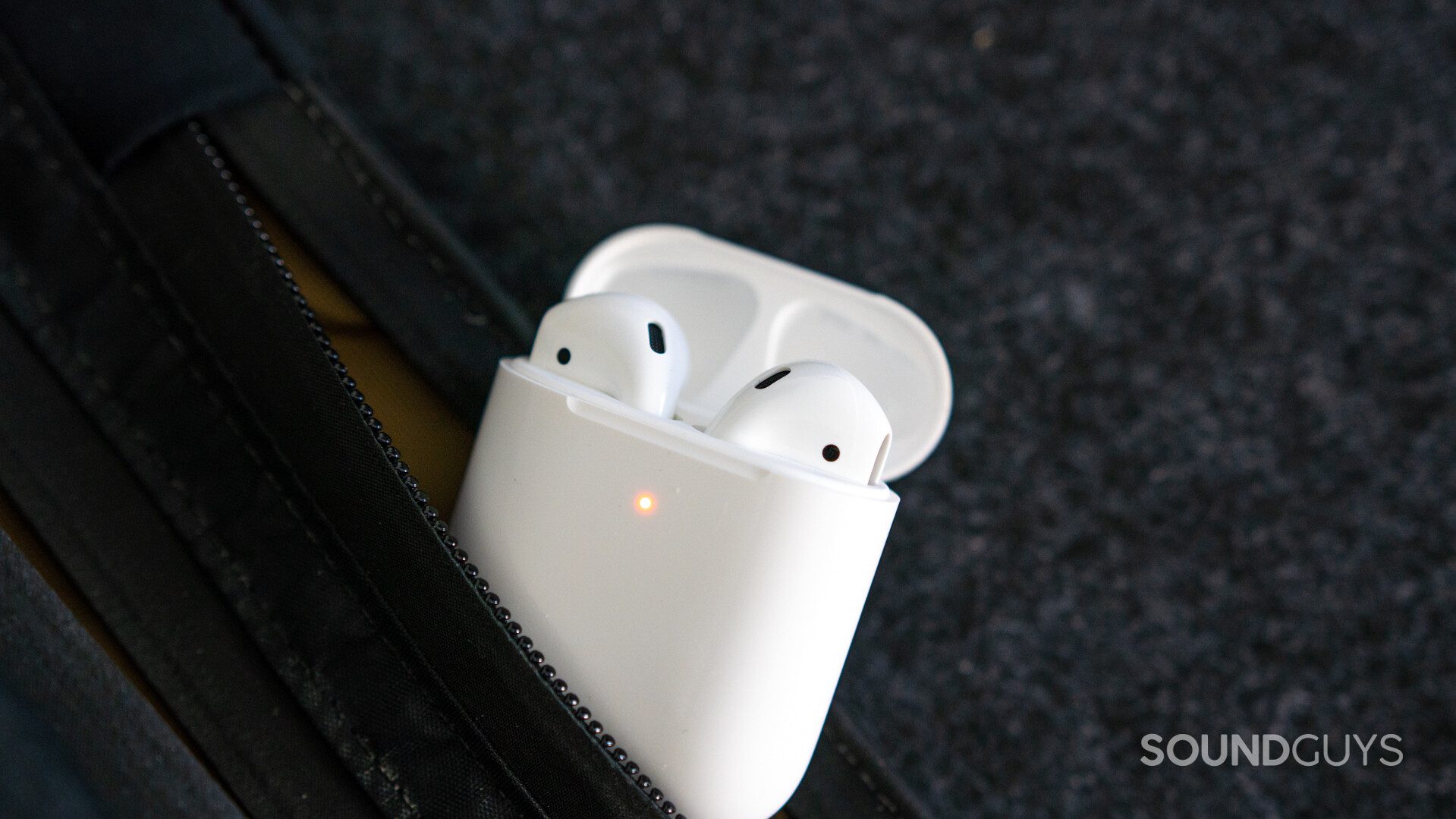
Both buds snap into the case magnetically just like before, and you can even buy the case separately.
The bottom of the charging case has a single Lightning port, and a button on the back lets you enter Bluetooth pairing mode. But what really makes the case design stand out are the magnets that keep the lid shut. Magnets also rest inside the case to secure the earbuds. The only real difference that is visible to the eye when it comes to the original AirPods and the new AirPods (2nd generation) is the small LED light on the front of the case for charging and pairing. It was previously on the inside of the case, so you would have to flick open the case in order to see it. The case is absolutely necessary when using the Apple AirPods. If you don’t have it with you, it’s all too easy to misplace and lose the earbuds. We did a fit test video on how the original version fit, and since the build and design haven’t changed at all it’s still applicable here.
Then you get to the Apple AirPods earbuds, which haven’t changed much. Actually, the earbuds haven’t changed at all. The AirPods’ inability to seal your ears leads to a lot of problems that just aren’t all that easy to hand-wave away. For example, outside noise is a much bigger problem for users of AirPods than it is for users of Bluetooth in-ears because neither version of AirPods isolates you from background noise. On each earbud, you have a tiny microphone for voice calls and a small sensor that gives you a few controls when you tap them.
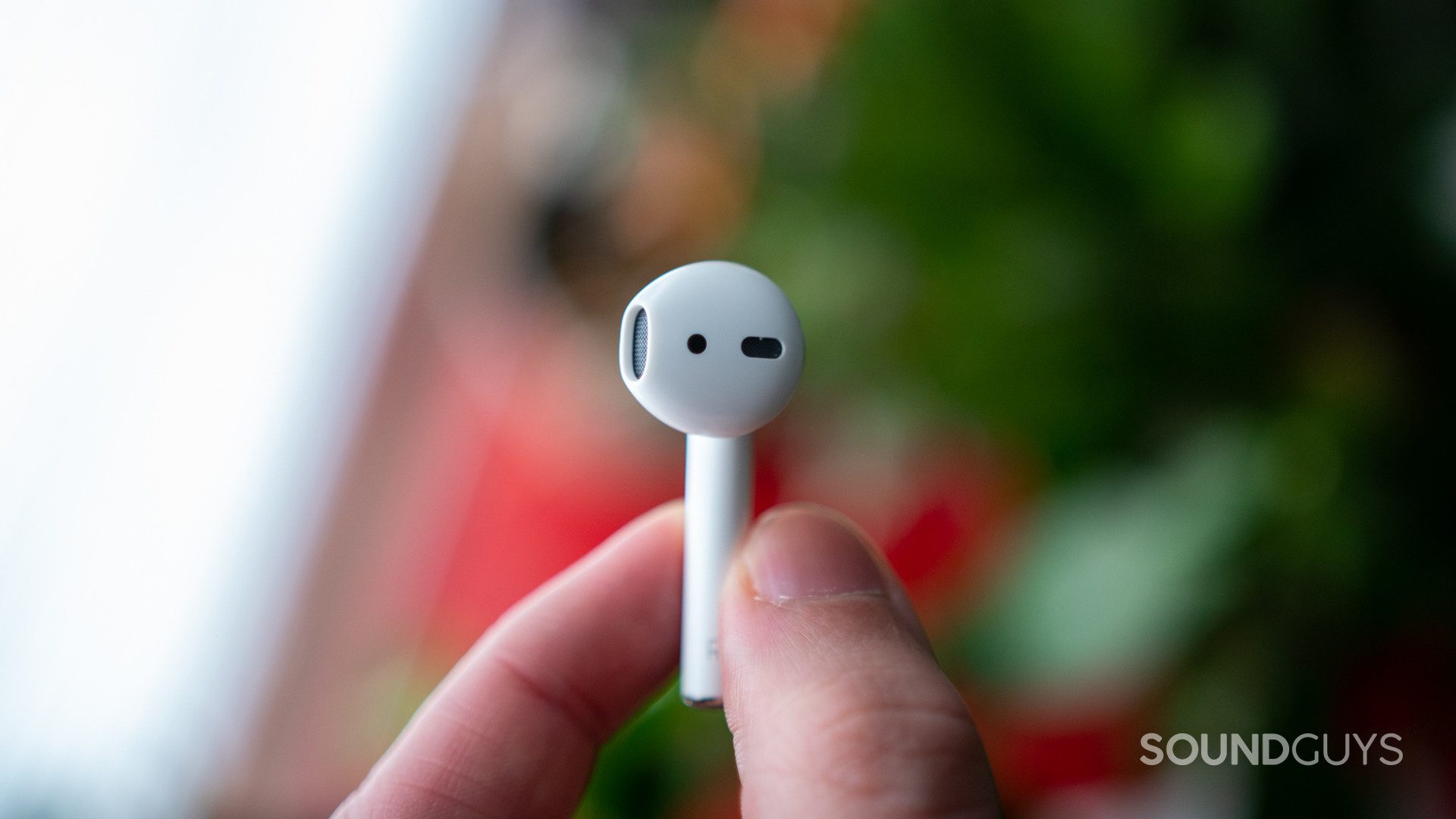
The earbuds work just like before, and are virtually identical.
Additionally, because the open-fit earbuds don’t seal, some people will find that the AirPods sitting outside the ear canal makes it vulnerable to drop-outs and shifting positions. These are extreme problems for true wireless earphones, as losing one bud means the death of your product. Now I’m sure you’ve seen plenty of people do all kinds of physical activities wearing AirPods, and if you’re one of them consider yourself lucky because if the AirPods don’t fit in your ears, they really don’t fit. If you want true wireless earbuds that fit well and afford all the same benefits of the AirPods, check out how the Beats Powerbeats Pro compares to the AirPods. Or if you have a little more to spend, you can go for the newer AirPods Pro which has a much better fit.
Unfortunately, this pair of earbuds is not waterproof. People still use the AirPods in the gym and for running, so anecdotally, it may seem like it, but there is no official IP rating from Apple to say that it is protected against water damage. If that’s what you’re after then you might want to go for the newer AirPods Pro (2nd generation) which is better in many respects. Like the original AirPods Pro, the 2nd generation has an IPX4 rating, making it fine to use the earbuds the rain or at the gym.
How do you connect the AirPods (2nd generation) to an iPhone?
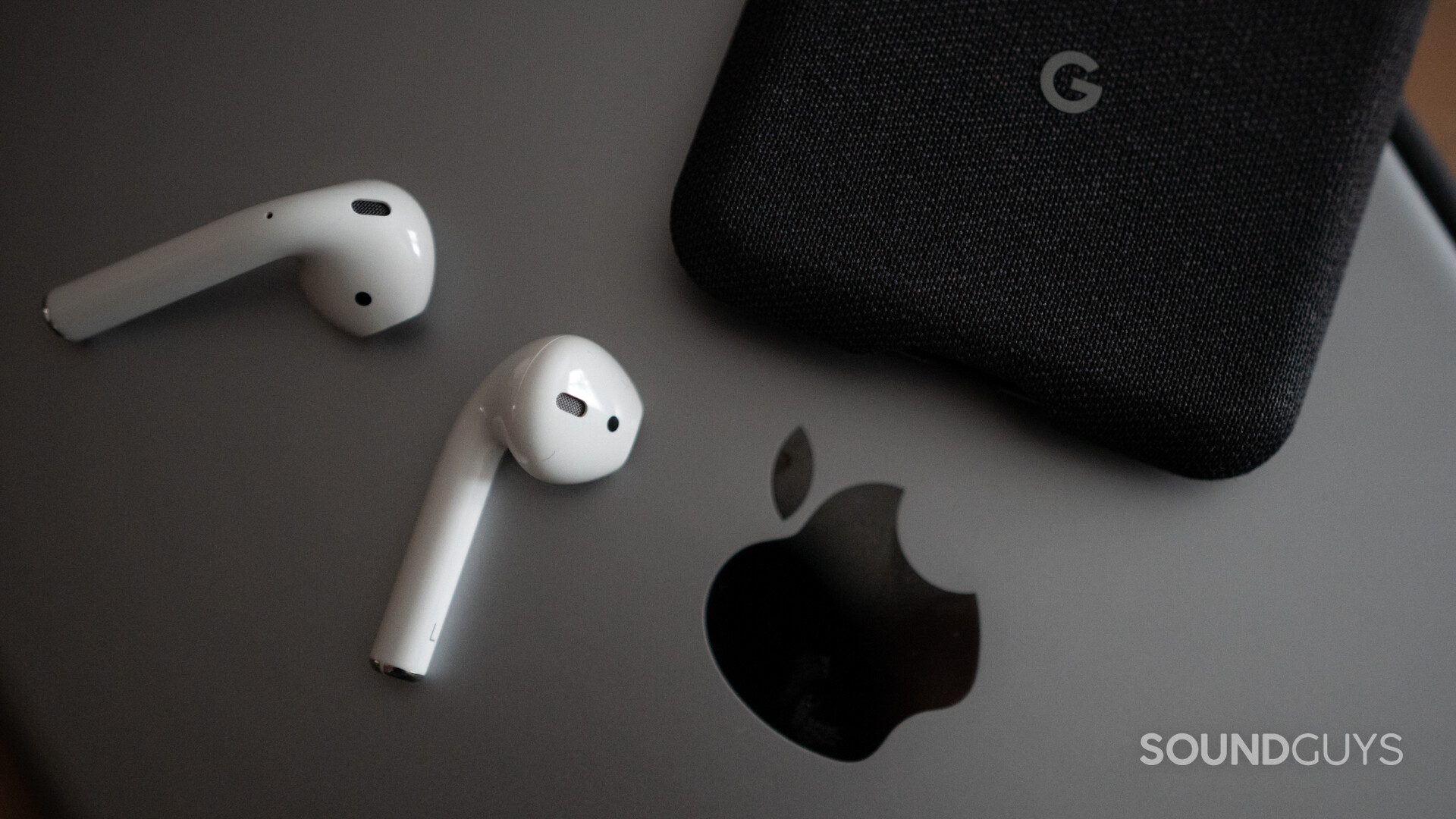
The AirPods works on both Android and iOS, but don’t expect it to work perfectly.
Connecting to an iOS device is as simple as tapping connect on the card that pops up on your device. When you connect to one device, it also connects to every device on your iCloud account. During testing, music never skipped once while connected to my iPad Air (except for when I was really testing range, but that doesn’t count).
You also get full access to all of the cool sensors and features on iOS. For instance, when listening to music, you can take one earbud out to pause the music, and placing it back in your ear will resume music. Plus, the new AirPods comes with the H1 chip (updated over the previous W1 chip), which lets you use the “Hey Siri” phrase to activate the voice assistant hands-free. Of course, you can also turn this option off in the settings of your iOS device if you want to squeeze a little more juice out of these batteries.
You’re going to have to get used to talking to Siri because that’s also the only way to control volume. In the settings on iOS, you can change the double-tap to pause or play music, which also makes no sense. If I’m reaching up to double-tap, I might as well just remove the earbud to automatically pause the music. It would have been much more helpful to include volume adjustments on the earbuds.
I can leave my phone on my desk and walk around my entire house easily without any connection hiccups. That’s about 18 meters away with walls and a floor in the way, not bad at all. Overall, the connection was pretty great with iOS.
After you pair your AirPods with your iPhone, you can then go ahead and set up Find My AirPods. If you get to the point where you absolutely lose your AirPods, or one earbud, you can also replace your AirPods.
This was more of a process and a much different story. The connection was still impressive, just not great. To connect, you have to pop open the case, hold down the button on the back of the charging case to enter pairing mode, and also find the AirPods in your Bluetooth settings. Okay sure, that isn’t really a big deal. But once connected, the experience is different.
The connection strength to my Google Pixel 3 isn’t nearly as good as on my old iPad. I counted about nine hiccups in only two hours of listening. The range also suffers when on Android. I can reach the fringes of 15 meters before connection issues occur. With the new AirPods, I even experience a significant lag in audio between the left and right buds, which only resolves itself after I pause and resume the music. You also won’t be able to automatically pause music by removing an earbud — music just continues playing. Double tapping the side of the AirPod does access the Google Assistant, which will allow you some control, but not as much as say, the Sony WF-1000XM4
Additionally, testing by our crack team here at SoundGuys revealed that connecting to Android devices can mean lower audio quality (device depending), though just how bad it sounds varies from device to device. It’s peculiar — and frustrating — but it’s another reason why we don’t list the Apple AirPods as the overall best true wireless earbuds out there. A set of headphones or earphones that uses only AAC will introduce an element of variability to your listening, and that’s no fun for anyone.
(Click the chart to expand.)
How long is the battery life of the Apple AirPods (2nd generation)?
Apple claims that the battery will last you about 5 hours on a single charge, but during our objective testing, we weren’t quite able to reach that. Instead, at 75dB we found that the Apple AirPods lasts 4 hours, 7 minutes of playback time using an iPhone X over the AAC codec. Compared to the original version, the H1 chip seems to offer about 21% longer life on the newest iteration of Apple’s true wireless earbuds. Though this may seem like a significant increase, we’re only talking about 30 or so minutes of extra battery life because the power cell is so small.
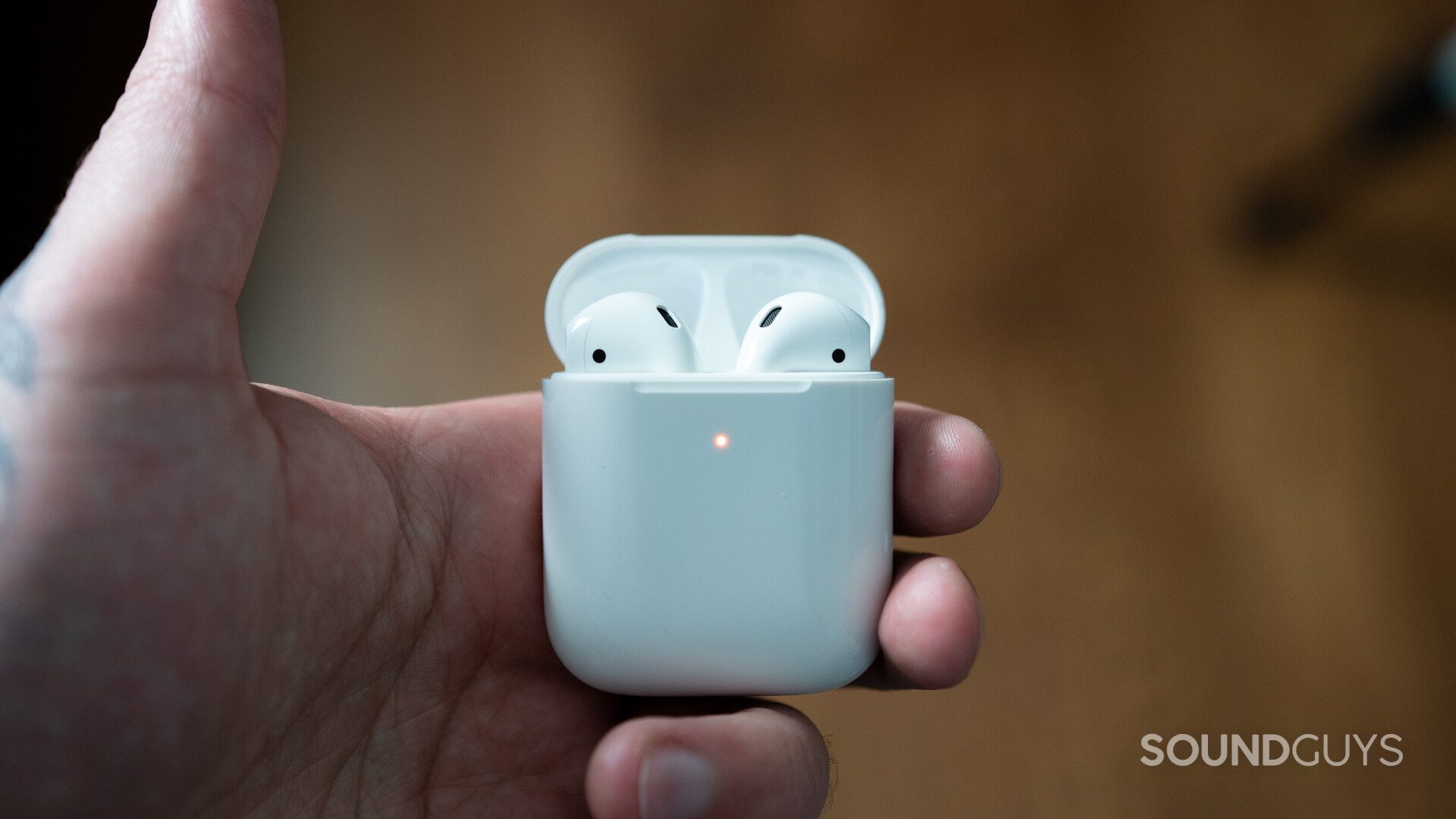
The new charging case has the same dimensions as the old one, save for a small LED light on the outside.
The overall battery life is quite poor compared to even regular Bluetooth earbuds, or even Bluetooth over-ears — and that’s if you’re using it with an iOS device that has been optimized to work with the new H1 chip. If you’re connecting to an Android phone, battery life is basically unchanged from the first version at only 3 hours, 29 minutes. That H1 chip also helps switch between iOS easier (which works nicely between my iPhone X and iPad Air) and it also allows for a stronger connection when you’re on voice calls. To be fair though, the quality of your call is going to depend more on the service coverage you have, but the AirPods will still get the job done.
Because the Apple AirPods’ batteries are tiny, it won’t last very long
The other thing you have to keep in mind is that because the Apple AirPods’ batteries are tiny, it won’t last very long compared to other units. Battery cells can only last so long before degrading, and even moderate use of the AirPods will accelerate its degradation. Just like it is with all true wireless earphones, you can’t replace the batteries in the AirPods, and this product will wear out within a few years’ time. Please do your best to recycle it if you do buy it, as the materials in its batteries are not only hazardous to throw out, but also valuable to reclaim from the trash heap.
| Earbuds | AirPods (1st gen) | AirPods (2nd gen) | AirPods Pro |
|---|---|---|---|
| Earbuds
Model Number |
AirPods (1st gen)
A1523, A1722 |
AirPods (2nd gen)
A2032, A2031 |
AirPods Pro
A2084, A2083 |
| Earbuds
Release year |
AirPods (1st gen)
2017 |
AirPods (2nd gen)
2019 |
AirPods Pro
2019 |
Due to the small size, the AirPods doesn’t have giant batteries inside, so it doesn’t last too long. Thankfully, the charging case does a good job at keeping it topped off when you’re not using it. After every use, simply placing it back in the case for safekeeping will keep it charged up for your next use. On the bottom of each earbud are small metal connectors that, when they come into contact with the small metal connectors in the case, proceed to charge them up.
Now depending on which model AirPods you have, charging the case can be slightly different. To determine which generation you have, check on the inside of the lid. There should be text printed on the underside that will tell you. If you can’t find it you can also check the settings in your iOS device while connected to the AirPods. In the settings app, you should also be able to find the AirPods’ model number.
If you have the first generation, then your charging case can only charge via Lightning connector. So plugging in any old Lightning cable from Apple will get the job done. If you have the second generation charging case then you can also charge wirelessly with any Qi-compatible charger. This just means that while the charging pad needs to be plugged into an outlet, you can just place the AirPods case onto the pad in order to charge it up without plugging in the case. Pretty neat.
One thing worth mentioning is that if you have the original AirPods, you don’t need to completely replace your earbuds in order to get wireless charging. Instead, you can just purchase the wireless charging case without the AirPods separately.
Does the AirPods (2nd generation) block out background noise?
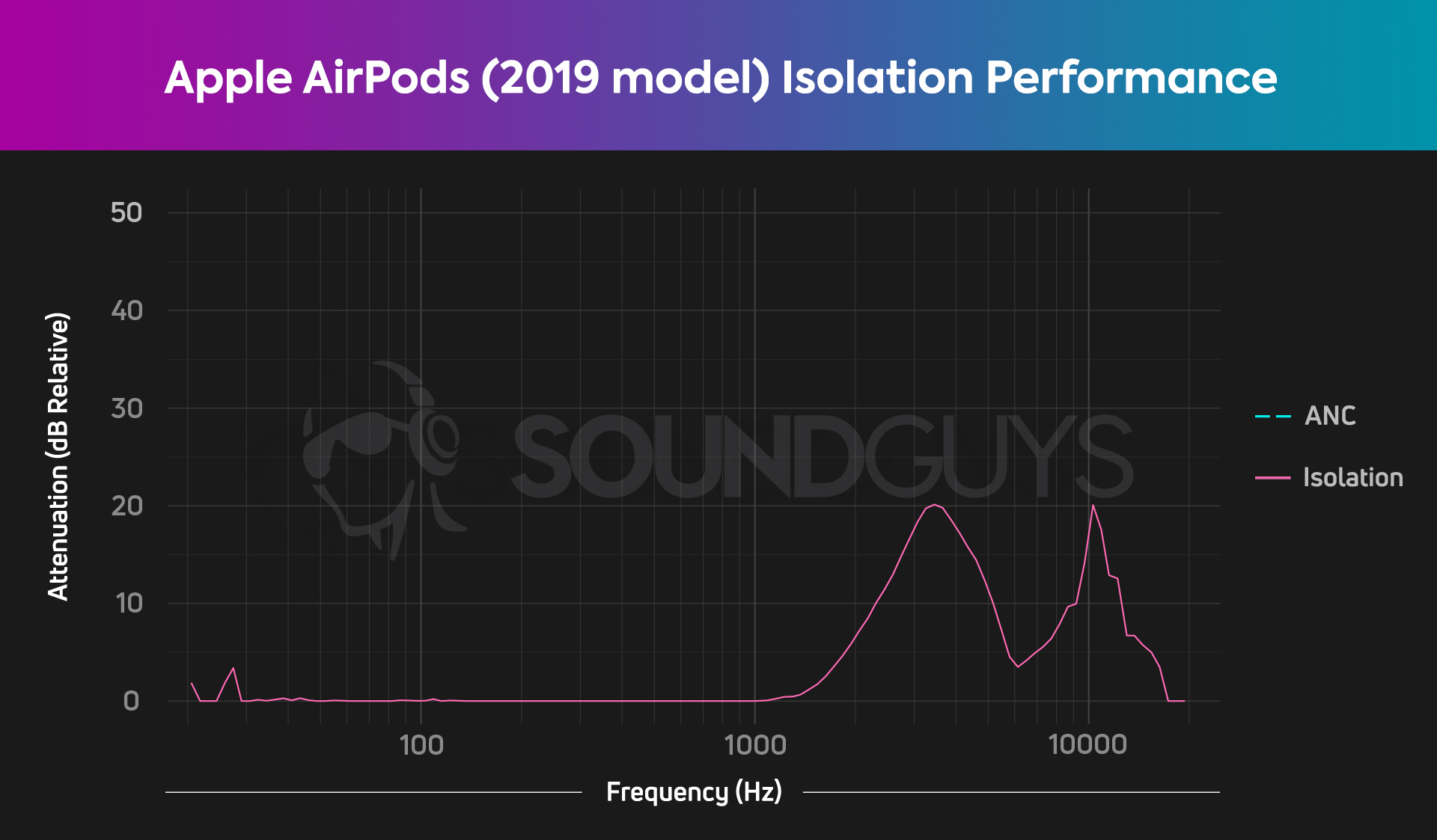
With no meaningful isolation (due to a poor seal over the ear canal) and zero noise cancellation, you will hear basically everything around you on the AirPods.
Isolation is very poor and among the worst we’ve tested simply because the earphones don’t seal to your ear (much like the Samsung Galaxy Buds Live). The higher the pink line, the more that certain frequency is blocked out, but as you can see, the AirPods does little to affect even high-frequency sounds. This has its perks, though: you can remain aware of your surroundings while walking to work or commuting on the subway, which can keep you safer. The downside is that in loud environments you’ll either not be able to hear your audio very well at all, or you’ll have to crank the volume to unsafe levels.
How does the Apple AirPods (2nd generation) sound?
Again, Apple takes a one-size-most-all approach with this pair of earbuds, so chances are it won’t fit your ears perfectly. This means that outside noises easily find their way into your ears and these things leak like it’s nobody’s business. If you don’t want the person next to you to hear your music, you’ll have to turn down the volume substantially. The theme here is that the AirPods has a very consumer-friendly sound, with a bit more bass than what our headphone preference curve suggests. However, this is only under perfect conditions. The AirPods targets a somewhat bass-heavy response, but most people will not hear it simply because the AirPods doesn’t cancel out sound, nor does it block it out.
If you’re a human with an ear that the AirPods don’t fit well (read: many of you reading this), you may notice a severe underemphasis in bass notes under 60Hz. While that sounds worse than it actually… sounds, you will immediately notice that kick drums, toms, and basslines will sound quieter or “off” from what they should sound like. Additionally, because the high notes are comparatively more emphasized: effects like echoes and the like will be much more pronounced.
Lows, mids, and highs
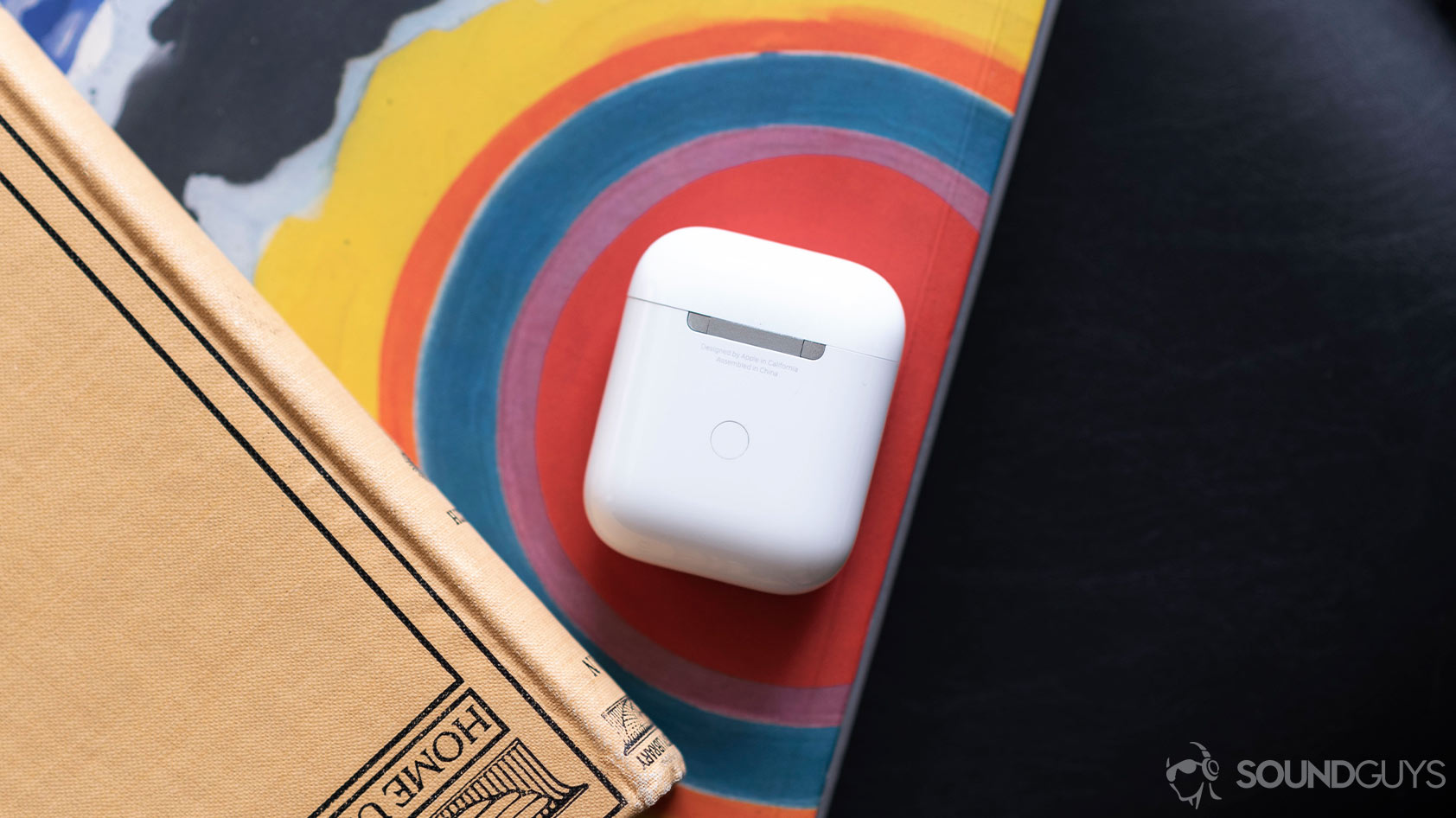
The AirPods 2 wireless charging case features an updated hinge design.
Right to the point, the low end isn’t great, but that’s entirely because of the lack of a seal. For example, the bass in California by Childish Gambino feels like it’s a very low mid rather than a bass.
Just like the regular wired EarPods, the mids are given a huge boost in these; vocals come through clearly. This goes for voice calls as well, by the way. The clearest phone calls I’ve ever heard on Bluetooth buds were with the AirPods (2nd generation). When it comes to music you can easily sing along to your favorite tunes, but background elements don’t really sit well with each other. Basically, every instrument in Generator ^ Second Floor by Freelance Whales seems to lose its weight and depth.
Considering how loud the headset can get, I’m actually really impressed with the highs. Sure, there isn’t a ton of detail reproduced by a cymbal hit, but nothing ever gets harsh or painful.
While you can enable lossless streaming on a compatible service, you won’t be getting it through the Bluetooth connection. Bluetooth currently does not support lossless audio in the way a wired connection can. Despite the addition of lossless audio to Apple Music, you won’t see any benefit to using it via your AirPods, so consider using a lower quality setting. Trust us, you won’t be able to tell the difference, even if you’re listening in a quiet room with no noise.
(Click the image to expand.)
How good is the microphone on the AirPods (2nd generation)?
The Apple AirPods does a surprisingly decent job with their microphones, as its tiny capsules can only provide so much audio quality. However, we’re confident in saying that the headset should be just fine for conference calls and other voice chatting services, as it manages its shortcomings extremely well. You can hear the sample we recorded for our comparison between the AirPods and the Samsung Galaxy buds below.
Apple AirPods (2nd generation) microphone demo (Ideal conditions):
Apple AirPods (2nd generation) microphone demo (Street conditions):
Apple AirPods (2nd generation) microphone demo (Windy conditions):
How does the microphone sample sound to you?
2418 votes
Should you buy the Apple AirPods (2nd generation)?
Let’s be honest, you’re probably not buying AirPods for sound quality. The reasons to buy the AirPods have everything to do with convenience, but that only works if you have an iPhone and ears that fit the product — otherwise you’re spending a lot of money on a disappointing product. The charging case is great; removing one bud to pause or play music works perfectly, and the connection rarely drops. Plus, the AirPods can charge the case wirelessly, which is nice.
That said, the AirPods is clearly made for iOS users and it still doesn’t offer much in terms of extra functionality — Android users have little reason to buy it. We also now have to point out that the Apple AirPods also has a bigger, badder brother in the AirPods Pro (1st generation) and (2nd generation). For $199 at Amazon, the latest AirPods Pro model offers a sealed listening experience with active noise canceling and a bunch of iOS-specific features not currently enjoyed by the AirPods. Furthermore, the original AirPods Pro (1st generation) dropped in price, now retailing for on the product’s website. The competition is tight even in the Apple ranks, but hey maybe you’ll wait for the Apple AirPods Pro (3rd generation) to come out.

Apple AirPods (2nd Generation)
Good for iPhones • ‘Hey Siri’ access • Share audio between Apple devices
iPhone users who want just the basics can’t go wrong with a set of AirPods
AirPods are the default earbuds for iPhone users, and the second-generation version of the product keeps up that trend. They don’t offer tons of bells and whistles, but they deliver the basics and will be easy to pair with your iPhone.
Should you get the AirPods (2nd generation) or AirPods (3rd generation)?
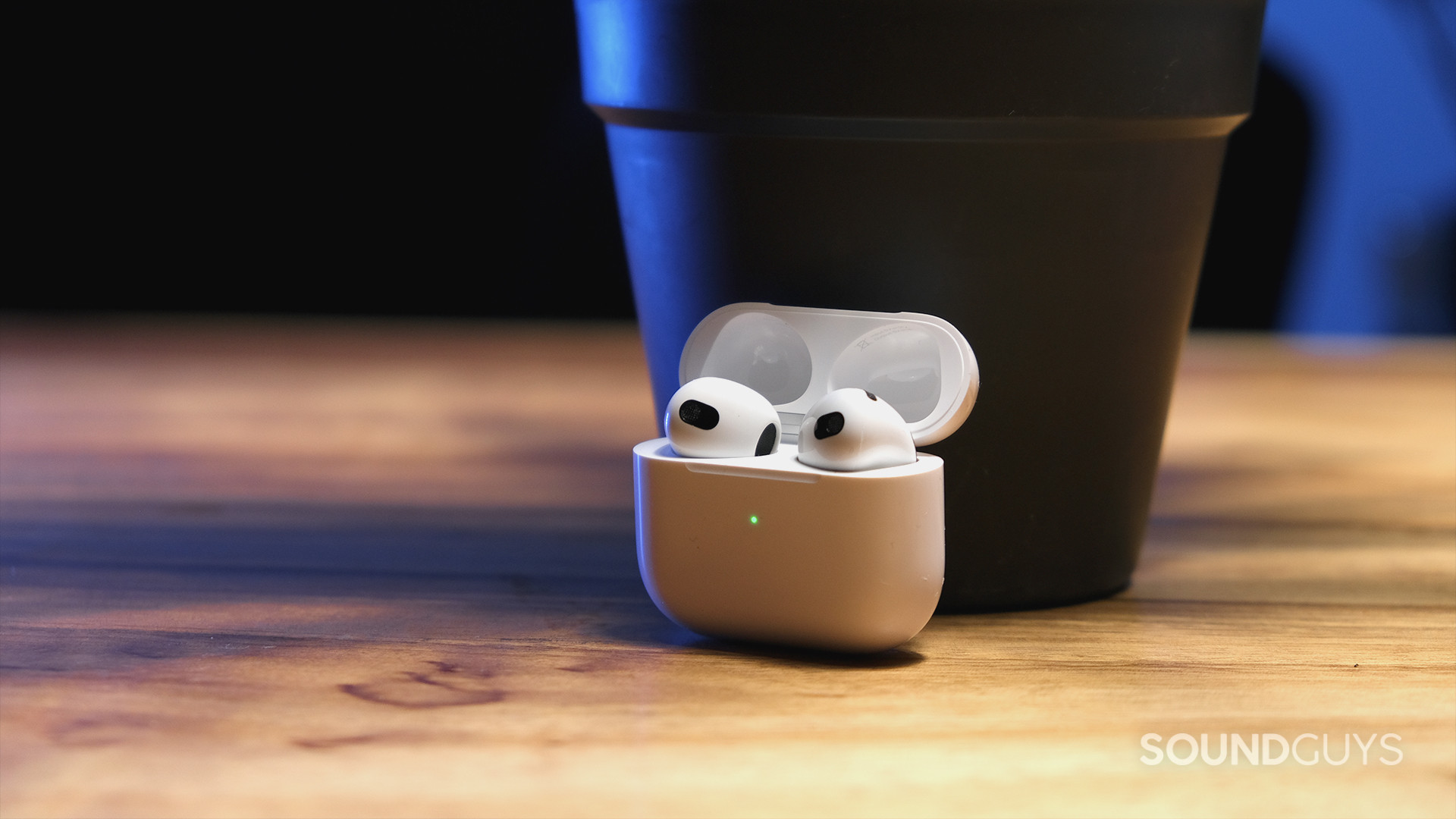
Apple AirPods (3rd generation)’s new case diverges from previous generations’ cases, more closely mirroring that of the AirPods Pro.
The AirPods (3rd generation) is the first set of open-type earbuds from Apple that supports spatial audio, which was once exclusive to the AirPods Pro and AirPods Max, along with a number of hardware changes. It has the same open ear approach as the first and second-generation models, but now it features a contoured design to fit better in more ears. The third-generation AirPods also bring Adaptive EQ, which debuted in the original AirPods Pro and compensates for the AirPods’ poor fit.
With a new IPX4 rating for water resistance, you can take the AirPods (3rd generation) to the gym without worrying about sweat damage. Battery life also sees a bump, and you get just over 6 hours of playtime on a single charge. The case has the capacity for four full charge cycles, and fast charging (5 minutes in the case means 60 minutes of listening time). The charging case supports wireless charging and will also use a MagSafe magnetic charging cord, which seems to be making a return across a lot of Apple devices.
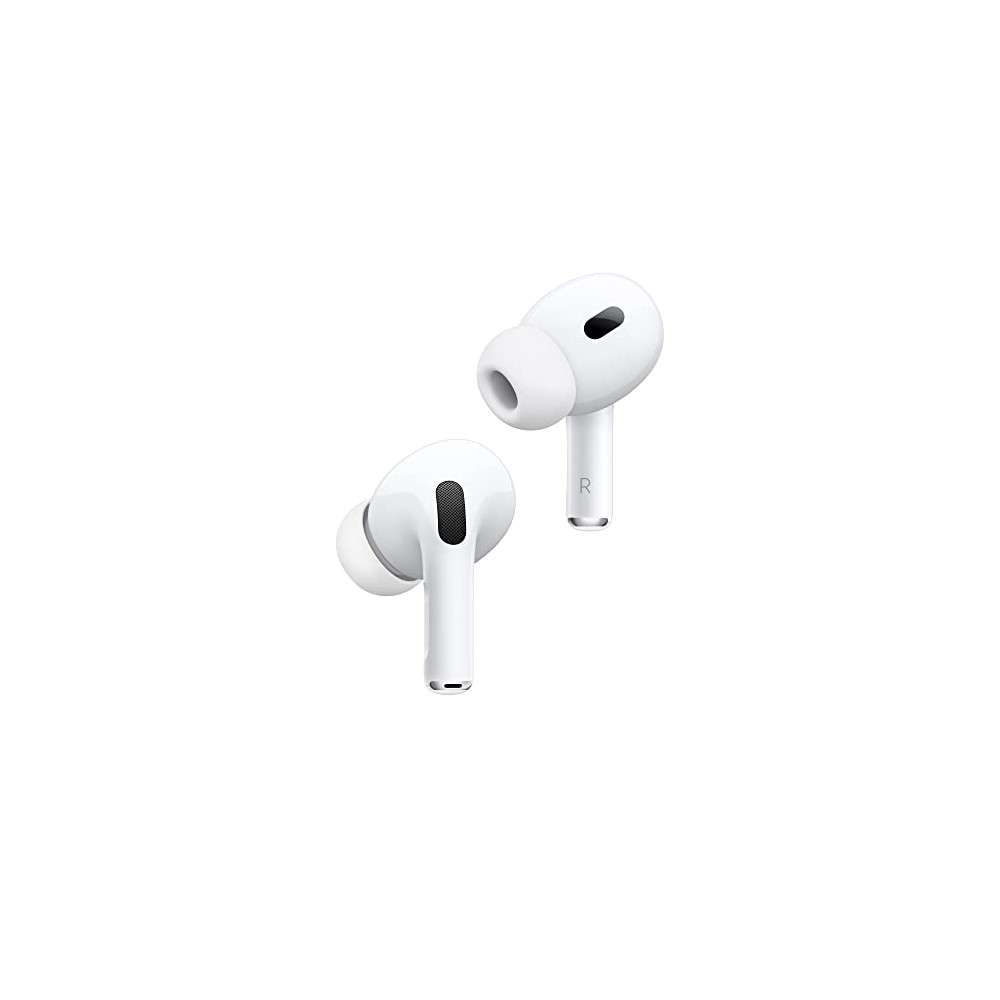
Apple AirPods (3rd Generation)
H1 chip • Easy for iPhones • Deep Apple integration
These work with Android, but iPhone users will see the best results
The Apple AirPods (3rd gen) are just a slight upgrade over the second-generation models, but iPhone users will be quite happy with the deep integration and ease of use these earbuds provide.
There are quite a few differences between the original AirPods and the new AirPods Max, the most important of which is the type of headphones they are. The original AirPods is a pair of wireless earbuds with an open design. This means that it doesn’t form a seal when you put it in your ears and outside noise will get in. This makes it harder to hear whatever it is you’re listening to if there is anything going on around you.
The AirPods Max is a set of over-ear headphones that will completely seal your ears against outside noise. On top of that, it also has some of the best active noise canceling in the business, which will get rid of any noise that sneaks through. It’s worth mentioning that this is only the biggest difference between the two. There are many more features that the AirPods Max has that the AirPods does not have.
The AirPods Max has larger 40mm drivers, transparency mode, Adaptive EQ which constantly adjusts the EQ of your music depending on your environment, spatial audio so that you can get a 5.1, 7.1, and Dolby Atmos surround sound experience with compatible content and devices. It also has a much higher price tag. The AirPods Max will run you $424.99 at Amazon, and you could get multiple pairs of AirPods for that price. However, the battery in the AirPods Max will last you several years longer than the tiny cells in the AirPods will.
(Click the image to expand.)
What are some alternatives to the Apple AirPods (2nd generation)?
While the AirPods is the most popular pair of wireless earbuds around, it’s not the only pair available — and it definitely isn’t the best. There have been plenty of best Apple AirPods alternatives in the last few years, and some of them might be worth looking into.
- Amazon Echo Buds (2nd Gen): Amazon brings some great noise canceling to its second-gen true wireless earphones, and it even outperforms the AirPods Pro. You get an IPX4 rating, wireless and USB-C charging, and a comfortable fit with an ear tip fit test that works on Android and iOS. It does tend to sell out often, but you can get it for $119 at Amazon.
- Apple AirPods (3rd generation): It sort of goes without saying, but the new model of AirPods has some improvements, including better battery life and the addition of spatial audio. You still don’t get much isolation, and it’s a little more costly selling for $195 at Amazon.
- Apple AirPods Pro (1st generation): The long-awaited successor to the AirPods was launched on October 30, 2019, and hosts a slew of updates that fix the worst things about the original AirPods — aka its lack of a seal. Additionally, it has active noise canceling, and enhanced features. It costs on the product’s website. There’s not much reason to buy the AirPods (2nd generation) if you can nab the AirPods Pro (1st generation).
- Apple AirPods Pro (2nd generation): Apple incrementally improves upon the original AirPods Pro with the addition of the H2 chip, and even better ANC. It doesn’t come cheap, but you can grab it for $199 at Amazon.
- Apple Beats Powerbeats Pro: While there are plenty of people using the AirPods for fitness, that isn’t what it’s made for. If you want to hit the gym with true wireless buds, check out the PowerBeats Pro. It has an IPX4 certification to protect against sweat, 10 hours of constant playback, and of course the around-ear hook design to keep it in place while you move around. Find it for $159 at Amazon.
- Beats Fit Pro: If you want a better fitting pair of earbuds with all the seamless integration expected of Apple, the Fit Pro plays nice with iOS and offers some noise canceling as well. Get a set for $159 at Amazon.
- Beats Studio Buds: Apple-owned company Beats has a pair of noise canceling earphones that cost little more than the AirPods and features a more comfortable, sealed design, IPX4 rating, and better sound quality. Pick it up for $99 at Amazon. Oh, and it works on Android almost as well as it does on iOS. You can see a comparison of the AirPods and Studio Buds frequency responses here (cyan represents the Studio Buds; yellow dashes represent the AirPods (2nd generation); white dots represent the AirPods Pro).
- Beats Studio Buds Plus ($169 at Amazon): These are the updated version of the Beats Studio Buds with improved noise canceling and battery life. Like the AirPods (2nd generation) these have all the controls in the Settings on iOS, so no added app is necessary.
- Google Pixel Buds A-Series: If you’re on iOS then you might as well just pick up the AirPods, but if you’re an Android user you should definitely first check out the Google Pixel Buds A-Series. While it has a different design that isn’t for everyone, it’s actually a pretty solid pair of buds that is worth giving a try, especially considering its affordable price of $94 at Amazon.
- Jabra Elite 7 Pro: The Elite 7 Pro is one of Jabra’s top-end pairs of ANC wireless earbuds that includes a wireless charging case and IP57-rated earbuds. This dust and water-resistant build makes the Elite 7 Pro a great pick for all kinds of athletes, and the compact design means you can take it anywhere without issue. It also has a great microphone compared to most out there. You can find it for the reasonable price of $199 at Amazon.
- Nothing Ear (stick): Maybe you still want a one-size-fits-most unsealed earbuds. If so, the Nothing Ear (stick) is an attractive set of earbuds that includes a competent app, is lightweight, and fairly priced, going for $99 at Nothing.
- Sony LinkBuds WF-L900: These open-type earphones are a great alternative to Apple’s earbuds because they leave your ears completely open to the world around you and fit well. Sony provides interchangeable wing tips to secure the buds in place, so this, along with the IPX4 rating, makes the LinkBuds a great exercise companion too. It costs $178 at Amazon.
Frequently asked questions about the Apple AirPods (2nd generation)
No, none of the Apple AirPods support Bluetooth multipoint. However, you can take advantage of automatic device switching between Apple hardware under the same iCloud account. This means when you’re listening to music on your iPhone and start playing a video on your MacBook, the AirPods (2rd generation) will stop playing from your phone and immediately switch to the laptop’s audio output.
Whether you were an early adopter of the AirPods or you just got a pair, it’s a good idea to clean it consistently. That doesn’t mean drowning the buds and case in water and destroying them, but there are some steps you can take to make sure that your buds stay clean and sanitary. This basically involves Q-tips and some isopropyl alcohol. You should be more careful when cleaning the original AirPods as these don’t have any protection against liquids.
The Apple AirPods (2nd generation) came out in 2019. They since been superseded by the Apple AirPods (3rd generation), Apple AirPods Pro (1st generation), and the Apple AirPods (2nd generation).

